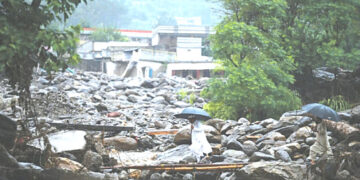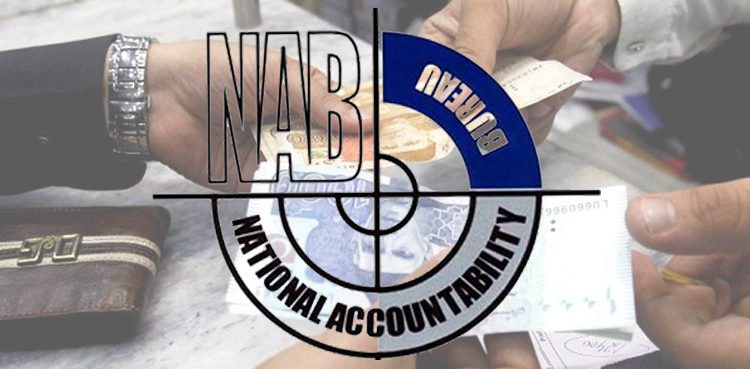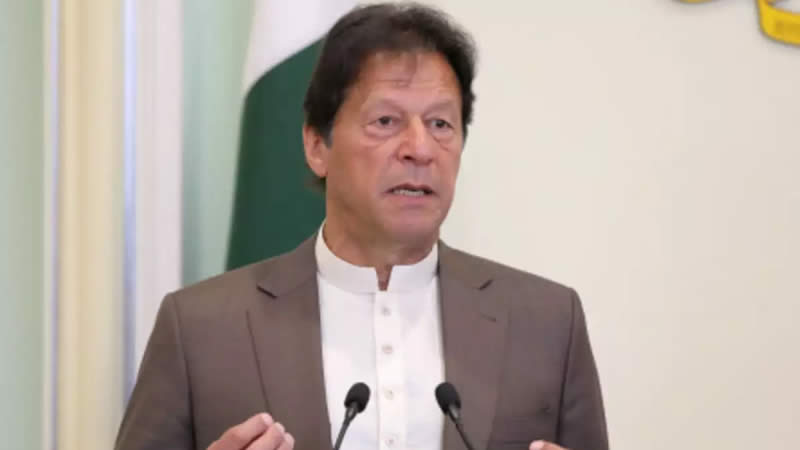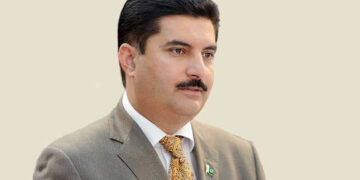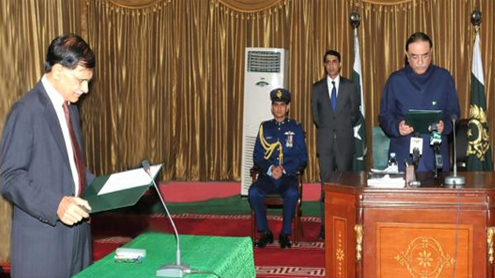 During the past few years, writers such as American Stephen Philip Cohen and Indian M.J. Akbar have denounced this country as a failed state. And, some writers, like Bruce Riedel, have gone beyond and have almost written its epitaph. Most of these writers have been looking at this country, which is counted as a key player not only in South Asia but also in global politics, from the perspective of their respective countries. There is no doubt that Pakistan is facing the most terrifying challenges these days. Trying to extricate it out of its multi-faceted predicaments, several brilliant writers got together to write the newly released book, titled, “Pakistan Beyond the Crisis State.”
During the past few years, writers such as American Stephen Philip Cohen and Indian M.J. Akbar have denounced this country as a failed state. And, some writers, like Bruce Riedel, have gone beyond and have almost written its epitaph. Most of these writers have been looking at this country, which is counted as a key player not only in South Asia but also in global politics, from the perspective of their respective countries. There is no doubt that Pakistan is facing the most terrifying challenges these days. Trying to extricate it out of its multi-faceted predicaments, several brilliant writers got together to write the newly released book, titled, “Pakistan Beyond the Crisis State.”
Published by Oxford University Press and edited by Dr. Maleeha Lodhi, the book’s contributors include: Prof. Ayesha Jalal, Prof. Akbar Ahmed, Mohsin Hamid, Maleeha Lodhi, Shuja Nawaz, Munir Akram, Zia Haider, Ishrat Husain, Meekal Ahmed, Ziad Alhahdad, Shahnaza Khan and Moeed Yusuf, Ahmed Rashid, Feroz Hassan Khan, Saeed Shafqat, Muddasar Mazhar Malik and Syed Rifat Hussain. The book has a perceptive and incisive introduction and a thought-provoking concluding chapter by the editor, Lodhi. Every essay contained in the book cascades with scholarship and a deeper understanding of the problem confronting their nation. However, what makes most of the essays distinct is the hope that permeates through all chapters. The writers sound optimistic that this country is not only going to extricate itself from the web of problem it is caught in but will also emerge as an important player not only amongst Muslim countries but in the world.
The book has more to do with self-examination than pointing fingers toward others. Every contributor has honestly looked at the forte and Achilles Heel of their nation and debated and discussed the challenges confronting Pakistan. The weaknesses that have contributed to the messy situation prevalent in the country, which made people look at it from the prism of terrorism, have been identified without reservations. The authors dispassionately look at the question of the country being looked at through the prism of terrorism. Every chapter in the book is an exercise in self-introspection that should enable decision makers to redraft their policies for taking the country out of its present phase of uncertainty. How Pakistan tumbled into a chaotic situation is the question that is in the back of almost every contributor’s mind. More than once, historical forces worked against this country, which didn’t allow it to grow to the vision of its founding father.
“Death of its founder soon after its birth meant that the mantle of a towering figure was inherited by a succession of squabbling political lightweights,” writes Lodhi. Quaid-e-Azam Muhammad Ali Jinnah had a vision for his country but none of the successive rulers ever tried to translate his vision of modern state into a reality. Had his vision been pursued, the country would have been altogether on a different pedestal — perhaps stronger than many of its neighbors. Jinnah’s ideas for his nation state continue to have the potential of steering it toward prosperity and dignity but Pakistanis need to “understand the vision of their founding father.” Pakistan is going through “fire” just like the time of its birth, which makes the founder of the nation as relevant today as when it was born.
Akbar Ahmed provides an insight into the vision of the founding father of the country: “His dream was a grand one: What he wanted was nothing less than one of the greatest nations in the world, not just in the Muslim world.” He sounds optimistic in stating that even today, “Pakistan is greater than the reality of the country.” Many have been attributing the chinks for the messy situation in Pakistan’s national identity. Ayesha Jalal discusses this issue in the first chapter. She writes that without a credible history, people cannot develop a historical consciousness, much less a national one. By devaluing history for political and ideological reasons, Pakistan has found it difficult to project a national identity that can strike a sympathetic chord with its heterogeneous people.
“Shorn of history, people living in myths are just that — a mythical people whose thoughts and actions lack credibility and substance, frustrated and depressed people,” she caustically remarks. For novelist Mohsin Hamid, national identity is not a problem, but states that it has allowed itself to be distracted and bogged down in the name of national identity for too long. He believes that a brighter future awaits Pakistan if Pakistan citizens, are willing to pay for it. “Pakistan Beyond the Crisis State” encompasses every challenge from inside and outside terrorism to the economic conditions of the country. The whole narrative is in fact woven around seven major subjects: Tahreek Taleban, Afghanistan, India, Kashmir, the future of democracy, army, bittersweet relations with the US and the growing isolation of Pakistan with the Muslim world.
In Lodhi’s introduction, she identifies five fault lines responsible for countries’ predicament, calling for introspection. It has Pakistan’s revolving democracy that neither yielded stability nor realized the country’s economic potential. Believing that democracy was yet to strike its roots in Pakistan, she gives a kaleidoscopic view of the failure of governance and institutions. “The Indian bugbear helped Pakistan to turn into the security state,” writes Jalal. The relations with India, which have been overwhelming and marked decades old animosity, have provided spine to the Pakistan story. Although no writer in the book contributed a chapter on Kashmir, the dispute over this strategically located state runs throughout the book. Kashmir more or less emerges as the central theme in the relations between the two neighboring countries.
“The geography and history of the troubled relations with India shaped the strategic culture, while greater power interests and dysfunctional geo-political strategies successively pursued by Islamabad intersected to aggravate the country’s challenges,” writes Lodhi. Former Pakistan ambassador Munir Akram, believes that Pakistan was confronted with a “pervasive challenge” from India. He identifies seven serious strategic reversals that affected Pakistan during the past nine years. One of these includes the “neutralization of the Kashmir freedom struggle, as Pakistan was obliged under US pressure to halt cross border support to them.” Akram sees greater advantages for Pakistan taking a bolder stand on Kashmir based on international principles. He believes that “it will not escalate the danger of a conflict so long as Pakistan’s conventional and nuclear deterrence capabilities remain credible.”
In the last chapter, Syed Hussain writes that without achieving any tangible results on Kashmir, Pakistan will not only remain devoid of substance but will also be perennially vulnerable to attempts by various kinds of spoilers to derail it. India’s growing role in Afghanistan does not only bother Akram, but even Jalal believes that “peace will remain a forlorn hope so long as Pakistan and India continue to see their interests in Afghanistan as zero gum.” Jalal sees impending threat to both Pakistan and India in war-torn Afghanistan. “Washington has to realize that the policy of de-hyphenating relations with India and Pakistan has its limitations and what is considered an opportunity in one may be cause of the problem in another.” Looking at the Afghan conundrum in a wider perspective, Ahmed Rashid also opines that Pakistan has “legitimate security concerns in the war torn country.”
In his chapter, Shuja Nawaz looks at the role of the army through the prism of India but also from the perspective of the country’s geography and history. However, at the same time, he writes that Pakistan’s proximity “to a large and dominating neighbor, India, shapes its foreign and defense policies and believes that tough neighborhood dictates that it should maintain a strong defense establishment.” Pakistan’s strategic marginalization in regional and global power relations is worrisome. Akram writes that the nature of Pakistan’s relations with Saudi Arabia has changed; it is now less equal and reciprocal. An erosion of Saudi support on Kashmir economically is visible as is the case with Pakistan’s relations with Iran and Russia.
This lucidly written book is a must read for Pakistan planners and all those connected with Pakistan. – Arabnews



